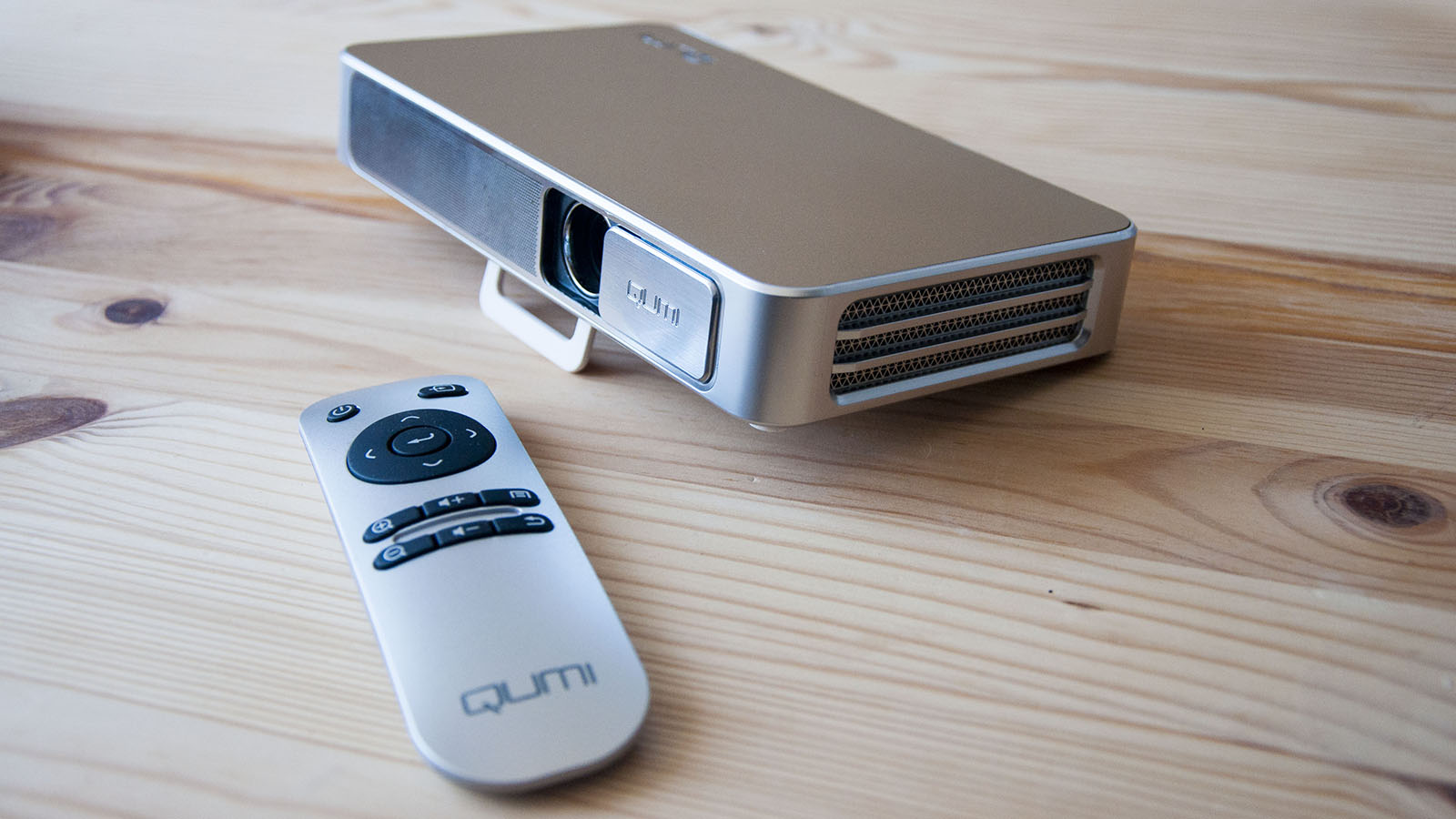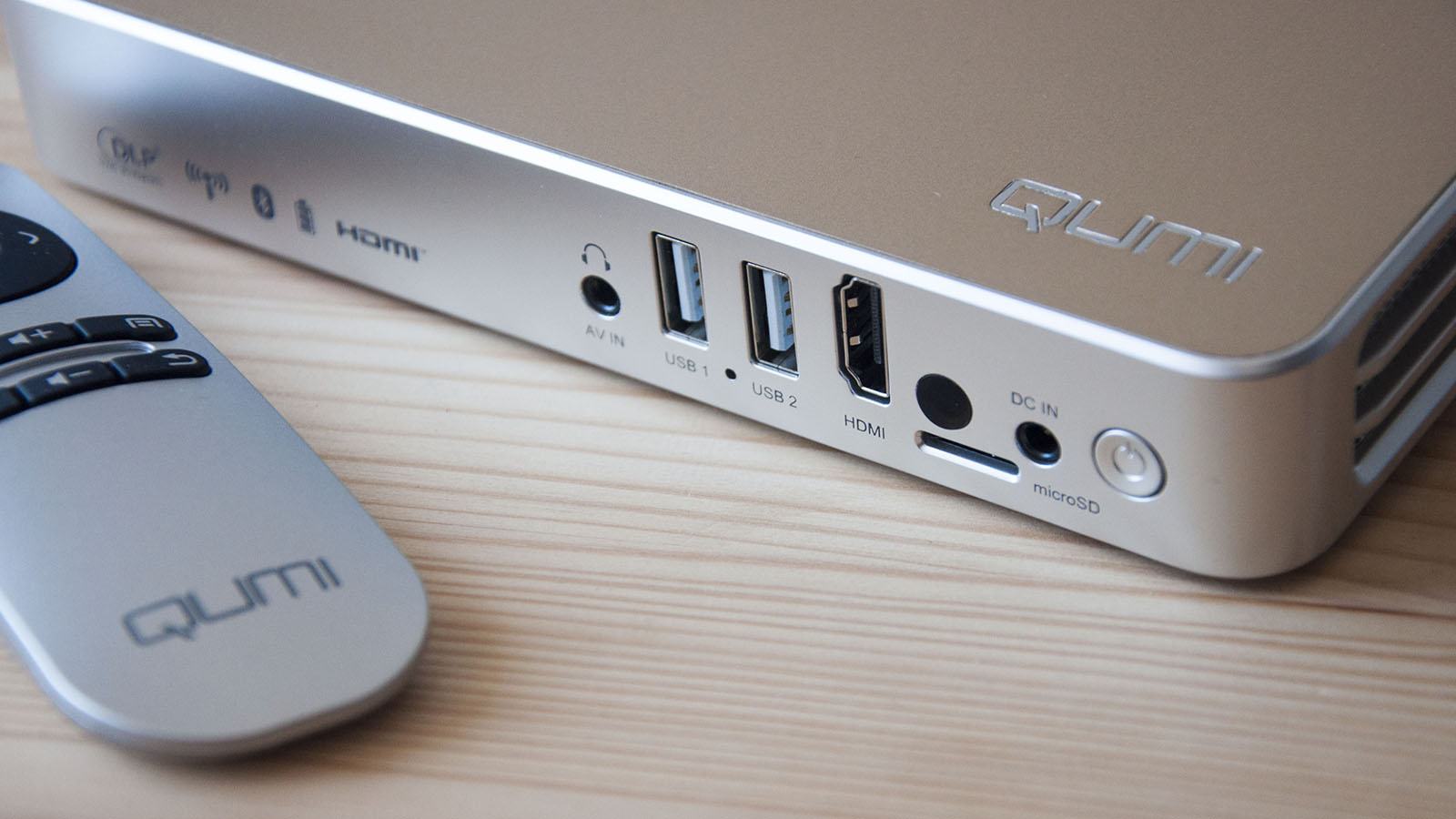TechRadar Verdict
A novel ultra-portable projector that’s slightly let down by a buggy Android OS and the limitations of putting a 500 Lumens LED inside a tiny battery powered box.
Pros
- +
Highly portable
- +
Battery powered
- +
Android OS
Cons
- -
Gets hot
- -
No Google Play store
Why you can trust TechRadar
Projectors offer a practical means to transport a large display without the logistics required to handle a big TV. With the arrival of LCD projectors, briefcase-sized devices became common. With the advent of LED and DLP technology, ultraportable projectors are available that can fit in a jacket pocket.
The Vivitek Qumi Q3 Plus is an example of the latest generation of ultra-portable projectors, and this one is even battery powered. It retails at $499 in the US, or around £480 in the UK.

Design
The Vivitek Qumi Q3 Plus is roughly the size of an old Sony Betamax videotape. That’s 176 x 103 x 28mm for less mature readers, a remarkably compact size for a projector that can throw an image which is 100-inch (2.6m) across the diagonal.
Weighing just 460g, it’s also a very portable solution that Vivitek claims can operate on an internal battery for up to 2 hours.
The natural resolution of the projection is 720p (1280 x 720), though it will accept a 1080p 60Hz signal through HDMI.
The outer skin is mostly plastic with a metallic paint, though there are various metal grills and a metal cover that protects the lens while in transit. The review model was gold, but other colors are available including black, white and red.
On the rear are two Type-A USB ports, useful for connecting extra storage or input devices. There is also a 3.5mm audio-out jack that doubles as an AV-in, a microSD card slot, and a full-size HDMI input on the rear.
Sign up to the TechRadar Pro newsletter to get all the top news, opinion, features and guidance your business needs to succeed!

The full specification reads much like that of an Android handset, and the similarities aren’t wholly coincidental.
At its heart, this unit is an ARM v7-based Android 4.4.2 system, with a custom launcher and subset of Android applications pre-installed.
We’ll talk more about the Android side later, but it is interesting to see how these ARM SoCs and Android builds are now becoming all-pervading smart components.
The other notable aspects here are a tripod mount on the underside of the device, and a small plastic foot that can elevate the angle of the Qumi Q3 Plus to clear any nearby objects.
The foot is made of a flexible rubberized material and has all the hallmarks of being a prime candidate for the first thing which is likely to break.
As slick looking in appearance as this device is, Vivitek made some design choices that made us scratch our heads somewhat.
An obvious one is the decision to mount the internal speakers at the front when surely people will be sitting behind the projector? Our logic is supported by the locations of the headphone socket and the remote control sensor, as both are on the back.
Some aspects seem better considered, like using the remote to control focus instead of a mechanical wheel.

The remote is small and cheaply made, but does just enough to navigate the interface. Where things become more challenging is when using the remote to input Wi-Fi passwords, as using it as a cursor is very finicky indeed. The obvious solution was to use a USB keyboard (UK layout), but we discovered that for whatever reason it would not give us shifted characters. A USB mouse proved to be a more helpful accessory, as it facilitated a fast moving pointer to use with the screen keyboard.
As soon as you turn the Qumi on, the fan inside starts to make a very audible sound. That noise might be drowned out by a game but could become irritating during a quiet movie.
We suspect that the issue here is that due to the small scale of this device, the fans are also small, forcing them to rotate rapidly to get enough cooling air through. Even with them spinning at full speed, after 90 minutes or so of operation, the Qumi Q3 Plus got noticeably warm to the touch.
Mark is an expert on 3D printers, drones and phones. He also covers storage, including SSDs, NAS drives and portable hard drives. He started writing in 1986 and has contributed to MicroMart, PC Format, 3D World, among others.

